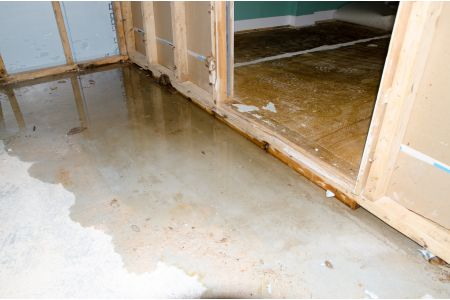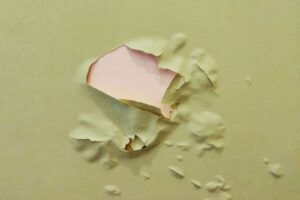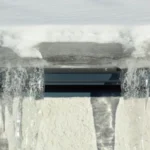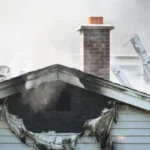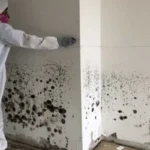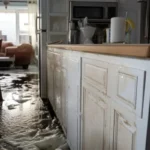Water damage is one of the most destructive and costly problems a homeowner can face—but not all damage is easy to spot. While burst pipes and flooded basements are obvious, hidden leaks often go unnoticed until severe damage has already been done. Musty odors, warped floors, peeling paint, and even a sudden spike in your water bill could be early signs of water damage lurking behind the walls or under flooring.
Ignoring these red flags can lead to mold growth, structural issues, and expensive repairs. The problem is that many homeowners do not recognize the subtle clues until it is too late. That small stain on your ceiling? It could be a slow leak from your roof. That slightly warped floorboard? It might mean moisture is seeping underneath. Catching these issues early is the key to preventing bigger, more costly repairs down the road.
In this guide, we will discuss the hidden signs of water damage that homeowners often miss and how to detect them before they turn into major problems. Protecting your home starts with knowing what to look for—let’s dive in.
1. Unexplained Increase in Water Bills
A sudden spike in your water bill without an apparent reason could mean water is leaking somewhere in your home. Even small, hidden leaks can waste hundreds of gallons of water each month, leading to higher costs and potential damage. Monitoring your water usage and checking for inconsistencies can help catch leaks early.
How an Unexpected Rise in Water Costs Could Indicate a Hidden Leak
If your water habits have not changed, but your bill keeps climbing, you may have a hidden leak. Small leaks in pipes, faucets, or underground lines can go unnoticed for months, silently increasing usage. Even a running toilet or a slow-dripping pipe behind a wall can waste gallons of water daily, leading to costly structural damage over time.
Steps to Check for Water Meter Inconsistencies
To test for a hidden leak, turn off all water sources in your home and check your water meter. If the meter continues running, water is escaping somewhere. Recheck after one hour—if the meter reading changes without water use, a leak is present. Inspect toilets, under sinks, and exposed pipes first, and if the issue persists, call a professional for an inspection.
2. Musty Odors & Mold Growth
A persistent musty smell in your home is often a sign of hidden moisture buildup, which can lead to mold growth. Mold thrives in damp, dark areas, spreading behind walls, ceilings, and flooring long before it becomes visible. Detecting the source early can prevent structural damage and potential health risks.
Why a Musty Smell Often Indicates Moisture Buildup
A musty or earthy odor is a clear indicator that moisture is trapped somewhere in your home. This happens when water seeps into walls, carpets, or insulation, creating the perfect breeding ground for mold and mildew. Even if mold is not visible, the odor alone suggests excessive humidity or a hidden leak that needs to be addressed.
How Mold Grows Behind Walls, Ceilings, and Flooring
Mold does not grow just on visible surfaces—it spreads behind drywall, under flooring, and inside ceilings where moisture lingers. Leaky pipes, roof damage, or poor ventilation can create damp conditions for mold to thrive. Over time, mold can weaken wood, drywall, and insulation, leading to costly repairs. Addressing moisture issues early is key to preventing long-term damage.
3. Discolored or Peeling Paint & Wallpaper
If your paint or wallpaper starts bubbling, peeling, or discoloring, it’s more than just a cosmetic issue—it’s a warning sign of hidden water damage. Moisture trapped behind walls causes paint to lose adhesion and wallpaper to lift, indicating a leak that needs immediate attention before it worsens.
Signs of Water Damage Behind Drywall
Drywall absorbs moisture, leading to stains, soft spots, or warped surfaces. If you notice yellowish-brown water stains on your walls, it could mean a slow leak behind the surface. Left unchecked, this moisture can lead to mold growth, structural weakening, and expensive repairs, making early detection crucial for preventing further damage.
How Bubbling or Cracking Paint Is a Clear Indicator of Hidden Leaks
Water behind walls pushes paint or wallpaper outward, creating bubbles, cracks, or peeling layers. This happens when pipes leak, roofs let water in, or humidity levels rise behind walls. If you see bubbling paint, do not just repaint—investigate the source. Identifying and fixing leaks early will prevent costly structural repairs and mold problems down the line.
4. Soft or Warped Flooring
If your wood floors, tiles, or carpets feel uneven or spongy, water damage could be hiding beneath the surface. Moisture trapped under flooring weakens adhesives, rots subflooring, and creates warping. Identifying the cause early can prevent costly replacements and stop further structural damage from spreading.
When Wood Floors, Tiles, or Carpets Feel Spongy, It’s a Sign of Moisture Absorption
Water-damaged flooring often feels soft, uneven, or bouncy. Wood planks may start to cup or buckle, tiles may loosen, and carpets can develop damp spots with no apparent spills. Leaks from plumbing, appliances, or foundation issues can seep beneath the surface, slowly weakening flooring materials and leading to mold growth.
What to Do When You Notice Flooring Abnormalities
If you spot warped, buckling, or soft flooring, inspect for leaks nearby—check under sinks, around appliances, and along walls. Use a moisture meter to confirm dampness. Dry the area immediately and determine if the issue requires professional repairs. In severe cases, flooring may need replacement, mainly if mold or subfloor damage has already occurred.
5. Ceiling Stains & Sagging Drywall
Water damage is likely lurking above if you notice brown stains or sagging areas on your ceiling. Leaks from roofs, plumbing, or HVAC systems often start slow but worsen over time, weakening drywall and leading to costly repairs. Identifying the source of moisture early can prevent extensive structural damage.
Why Water Stains Often Indicate Leaks in the Roof or Plumbing
Ceiling stains—typically yellow, brown, or dark rings—signal slow, persistent leaks. Roof leaks often cause stains near corners or light fixtures, while plumbing issues appear below bathrooms or kitchens. Even if the stain dries, the underlying leak may still exist, leading to rot, mold, or recurring damage if left unaddressed.
How Sagging Drywall Means Serious Structural Damage
When drywall absorbs water, it softens, swells, and eventually sags, creating visible bulges or cracks. This is a serious issue, as weakened drywall can collapse under its own weight. If your ceiling starts to sag, do not ignore it—it could mean a severe leak behind the walls. Immediate repairs are needed to prevent structural failure.
6. Unusual Sounds in Walls
If you hear dripping, hissing, or gurgling sounds from inside your walls, water may leak where you cannot see it. Small leaks behind drywall can go unnoticed for months, leading to hidden moisture damage, mold growth, and weakened structures. Recognizing these warning sounds early can help prevent expensive repairs.
Sounds of Dripping Water or Hissing Pipes When No Water Is Running
Water is escaping somewhere if you hear dripping or trickling sounds when no faucets are on. A hissing noise could indicate a pressurized pipe leak, allowing water to spray into the walls. These sounds are most noticeable at night when the house is quiet, signaling leaks that need urgent attention before severe damage occurs.
How This Could Mean Pipe Leaks Inside Walls
Hidden pipe leaks often go undetected until moisture stains, mold, or musty odors appear. A small leak can saturate insulation and drywall, weakening the structure over time. If you suspect a hidden leak, shut off the main water supply and listen closely. If the sounds persist, call a professional plumber to locate and fix the issue before it worsens.
7. Cracks in Foundation or Exterior Walls
Small cracks in your foundation or exterior walls may seem harmless, but they can be a sign of water infiltration. Over time, moisture weakens the foundation, leading to structural shifts, uneven floors, and costly repairs. Monitoring cracks and addressing water issues early can help prevent serious long-term damage.
Water Infiltration Can Lead to Structural Issues
Water seeping through foundation cracks can erode concrete, weaken support beams, and lead to basement leaks. When moisture collects in these cracks, it can cause expansion during freezing temperatures, worsening the damage. Left unchecked, this can result in uneven floors, stuck doors, or even wall separation, requiring major foundation repairs.
What to Do If You Notice Foundation Cracks Widening Over Time
If cracks grow wider or form stair-step patterns, they may indicate shifting or settling foundation issues. Seal minor cracks with waterproof sealants, but if they continue expanding, consult a foundation specialist. Addressing drainage issues, such as redirecting gutters or installing a sump pump, can prevent water buildup and further structural problems.
Think You Might Have Hidden Water Damage?
Water damage does not always show up right away, but the longer it goes unnoticed, the worse it gets. Musty odors, peeling paint, warped floors, or rising water bills could all be warning signs of a hidden leak. Ignoring these signs can lead to mold growth, structural damage, and costly repairs.
Do not wait until it is too late to address signs of water damage! If you suspect water damage in your home, SS Water Restoration is here to help. We offer professional inspections, fast water damage restoration, and 24/7 emergency services to keep your home safe. Call now for expert assistance and peace of mind!
FAQs
1. How can I tell if water damage is new or old?
2. Can hidden water damage lead to mold?
3. Is water damage covered by homeowners insurance?
4. What tools can help detect hidden leaks?
5. When should I call a water restoration professional?

